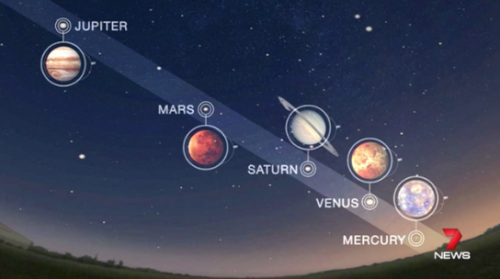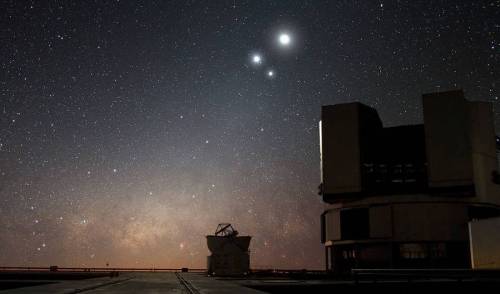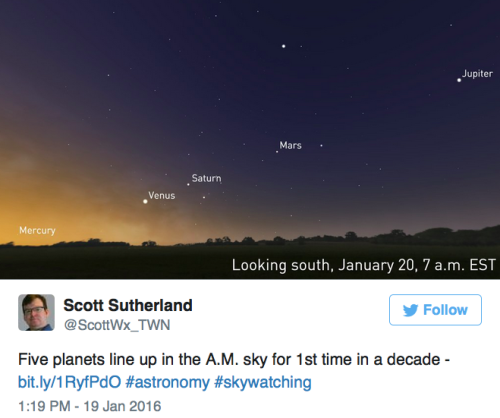Scotlandknight-blog - ScotlandKnight

More Posts from Scotlandknight-blog and Others








A strange underwater structure has been uncovered about 6 miles off the coast of Point Dume in Malibu, is this the holy grail UFO/USO base that researchers have been hunting for for the last 40 years?
Google Earth. Images show an oval-shaped structure with a flat top and what looks to be pillars that reveal a dark entrance to who knows where. The structure sits about 2,000 feet below the surface of the water and measures about 3 miles wide.
You can check out the images yourself on Google Earth using the coordinates 34° 1’23.31″N 118° 59’45.64″W.
Cassini Top 10 Images and Science Results of 2015
As our Cassini spacecraft enters its final 20 months before its plunge into Saturn, the mission’s science team has selected their top 10 images from 2015 (above), a year of historic discoveries, as well as the top science results (below). Take a look:
1. First Deep Seafloor Hydrothermal Vents Found Beyond Earth

Cassini found the first evidence of active hot-water chemistry beyond planet Earth. An extensive, four-year analysis of data from the spacecraft, computer simulations and laboratory experiments led researchers to the conclusion the tiny silica (SiCO2) grains most likely form when hot water containing dissolved minerals from the moon’s rocky interior travels upward, coming into contact with cooler water.
2. Global Ocean Beneath Enceladus’ Surface

A global ocean lies beneath the icy crust of Saturn’s geologically active moon Enceladus. Scientists analyzed more than seven years’ worth of images of Enceladus taken by the spacecraft, which has been orbiting Saturn since mid-2004. As a result, they found Enceladus has a tiny, but measurable wobble as it orbits Saturn. This proves that there must be a global layer of liquid separating the surface from the core.
3. Titan Observed Outside of Saturnian Magnetosphere

During Cassini’s flyby of Titan, the giant moon happened to be on the sunward side of Saturn when a powerful outburst of solar activity reached the planet. The strong surge in the solar wind so compressed the sun-facing side of Saturn’s magnetosphere that the bubble’s outer edge was pushed inside the orbit of Titan. This left the moon exposed to, and unprotected from, the raging stream of energetic solar particles. The region of space dominated by Saturn’s magnetic field is called the magnetosphere.
4. Density of a Ring Particles May Indicate Recent Origins

Saturn’s A ring was found to be warmer than expected at the planet’s equinox, and also had an unusually large thermal asymmetry about the equinox. This could be due to the A ring being mostly composed of denser particles made primarily of solid ice, with a thin top layer of fluffy regolith.
5. Titan Southern Polar Ice Cloud

Scientists have detected a monstrous new cloud of frozen compounds in Titan’s low- to mid-stratosphere – a stable atmospheric region above the troposphere, or active weather layer.
6. Curtain Vents on Enceladus?

New research using data from Cassini suggests most of the eruptions from Saturn’s moon Enceladus might actually be diffuse curtains rather than discrete jets. Many features that appear to be individuals jets of material erupting along the length of prominent “tiger stripe” fractures in the moon’s south polar region might be phantoms created by an optical illusion, according to the new study.
7. Discovery of Tethys Red Arcs

Like graffiti sprayed by an unknown artist, unexplained arc-shaped, reddish streaks are visible on the surface of Saturn’s icy moon Tethys. The origin of the features and their reddish color is a mystery to scientists.
8. Saturn’s 30-year Giant Storms Powered by Water Convection

Changes in temperature and the composition of the hydrogen-laden air within the remnants of a giant storm system on Saturn reveal that air was lofted more than 120 miles in altitude from the deeper water condensation levels.
9. Seasonal Change Seen at Saturn’s Poles

Saturn’s polar regions have displayed extreme seasonal changes during Cassini’s decade-long watch, providing the most comprehensive view ever obtained of seasonal change on a giant planet.
10. Huygens Probe Imaging Mosaic of Titan’s Surface and Descent Movie

Ten years ago, an explorer from Earth, the Huygens probe, was released from the Cassini spacecraft and parachuted into the haze of an alien moon toward an uncertain fate. After a gentle descent lasting more than two hours, it landed with a thud on a frigid floodplain on Titan, surrounded by icy cobblestones.
Make sure to follow us on Tumblr for your regular dose of space: http://nasa.tumblr.com

Galactic politics

NGC 7635: The Bubble Nebula from NASA APOD, 22 April 2016
Fascinating....



Five planets will align for the first time since 2005
In an event that hasn’t happened in a decade, Mars, Mercury, Saturn, Jupiter and Venus will illuminate morning skies around the world beginning Wednesday, and last a full month, until Feb. 20. The time of night that’s best for viewing.
Follow @the-future-now






fresh off the boat, s02e11








UFO caught materializing on dashcam video, April 14 This vdeo of a ufo was captured by a father and daughter while driving, and shows a possible flying saucer materializing or coming into shot super fast. Excellent catch.

(photo via gildid)
-
 neonman92-blog liked this · 5 years ago
neonman92-blog liked this · 5 years ago -
 lazilycoraldaze-blog liked this · 6 years ago
lazilycoraldaze-blog liked this · 6 years ago -
 s0uth-of-the-moon liked this · 7 years ago
s0uth-of-the-moon liked this · 7 years ago -
 scotlandknight-blog reblogged this · 9 years ago
scotlandknight-blog reblogged this · 9 years ago -
 fletchwazzle reblogged this · 9 years ago
fletchwazzle reblogged this · 9 years ago -
 fletchwazzle reblogged this · 10 years ago
fletchwazzle reblogged this · 10 years ago -
 deanxietized liked this · 10 years ago
deanxietized liked this · 10 years ago -
 el-angel-bunuel reblogged this · 10 years ago
el-angel-bunuel reblogged this · 10 years ago -
 diegodasilvassauro reblogged this · 10 years ago
diegodasilvassauro reblogged this · 10 years ago -
 eredwardss reblogged this · 10 years ago
eredwardss reblogged this · 10 years ago -
 waltersobchaks reblogged this · 10 years ago
waltersobchaks reblogged this · 10 years ago -
 diegodasilvassauro liked this · 10 years ago
diegodasilvassauro liked this · 10 years ago -
 cinemajunkie70 liked this · 10 years ago
cinemajunkie70 liked this · 10 years ago -
 whatsinthesauce reblogged this · 10 years ago
whatsinthesauce reblogged this · 10 years ago -
 darow3n liked this · 10 years ago
darow3n liked this · 10 years ago -
 sloppysink reblogged this · 10 years ago
sloppysink reblogged this · 10 years ago -
 kirkvonnegut-blog reblogged this · 11 years ago
kirkvonnegut-blog reblogged this · 11 years ago -
 kirkvonnegut-blog liked this · 11 years ago
kirkvonnegut-blog liked this · 11 years ago -
 ufoilija-blog reblogged this · 11 years ago
ufoilija-blog reblogged this · 11 years ago -
 welcometothepleasuredome-blog reblogged this · 11 years ago
welcometothepleasuredome-blog reblogged this · 11 years ago -
 unclemalama reblogged this · 11 years ago
unclemalama reblogged this · 11 years ago -
 unclemalama liked this · 11 years ago
unclemalama liked this · 11 years ago -
 consumptionisbeingstandardized reblogged this · 11 years ago
consumptionisbeingstandardized reblogged this · 11 years ago -
 turgle-turgle liked this · 11 years ago
turgle-turgle liked this · 11 years ago -
 patmaan reblogged this · 11 years ago
patmaan reblogged this · 11 years ago -
 madkid3 reblogged this · 11 years ago
madkid3 reblogged this · 11 years ago -
 n2qfd liked this · 11 years ago
n2qfd liked this · 11 years ago -
 snglrc1 liked this · 11 years ago
snglrc1 liked this · 11 years ago -
 weegboi liked this · 11 years ago
weegboi liked this · 11 years ago -
 mrwolflundmark0086 reblogged this · 11 years ago
mrwolflundmark0086 reblogged this · 11 years ago -
 feoandtheaquanauts reblogged this · 11 years ago
feoandtheaquanauts reblogged this · 11 years ago -
 feoandtheaquanauts liked this · 11 years ago
feoandtheaquanauts liked this · 11 years ago -
 anddeathspoke reblogged this · 11 years ago
anddeathspoke reblogged this · 11 years ago -
 ikipr reblogged this · 11 years ago
ikipr reblogged this · 11 years ago -
 smus-h reblogged this · 11 years ago
smus-h reblogged this · 11 years ago -
 kosmologi liked this · 11 years ago
kosmologi liked this · 11 years ago -
 settyan42 reblogged this · 11 years ago
settyan42 reblogged this · 11 years ago